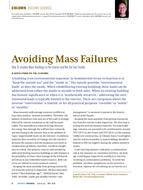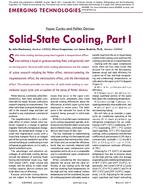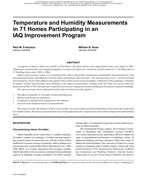Indoor temperatures in summer may become too warm for comfort. The actual temperature elevation between indoor and outdoor temperatures depends on a number of factors involved in the building design. If the elevation is not too great, it may be Possible to provide comfortable conditions .by the use of increased air movement, rather than air conditioning. An experiment was set up at ECRC Capenhurst to find if the combination of warm air temperatures and increased air movement was found comfortable, and whether there is a maximum air temperature above which the use of increased air movement cannot provide satisfactory conditions. Eleven subjects were exposed to temperatures in the range 22 to 300 C, and allowed to regulate the speed of an overhead ceiling fan. It was found that the subjects chose fan speeds which increased with air temperature, to a maximum of about 2 mls at 300 C. The fan speeds chosen were less than those necessary to maintain thermal neutrality; the subjects’ skin temperatures and warmth votes increased with air temperature.
It is shown that people’s perception of the strength of an air flow increases as the square of the air speed, while the cooling effect only increases as the square root of the speed. This sets an upper 1imit to acceptable air speeds. Our subjects found a temperature of about 28°c to be the highest comfortable temperature; above this, overall comfort deteriorated.
Citation: ASHRAE Transactions, Volume 84, Part 2, Albuquerque, NM
Product Details
- Published:
- 1978
- Number of Pages:
- 14
- File Size:
- 1 file , 640 KB
- Product Code(s):
- D-AL-2507


